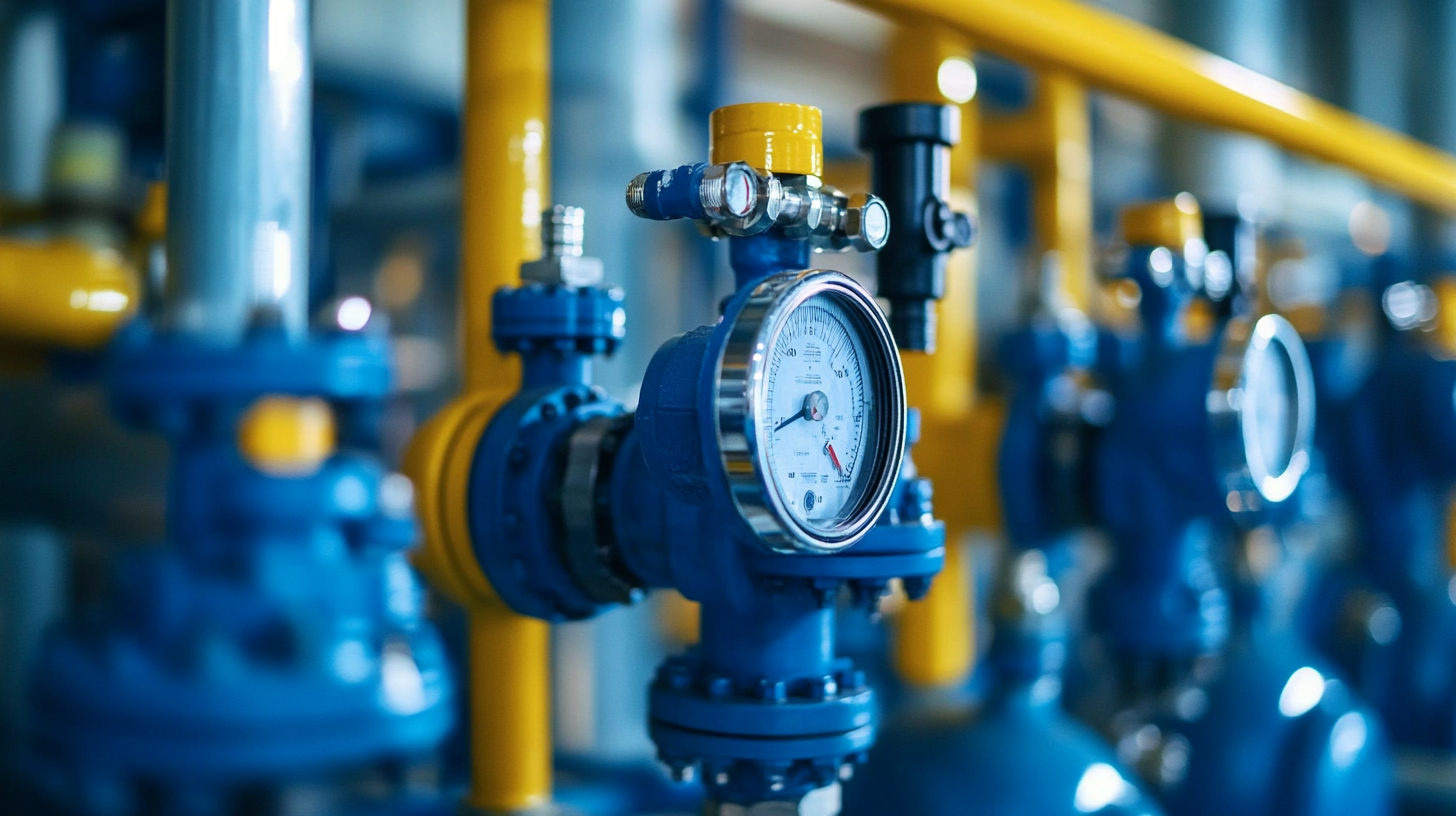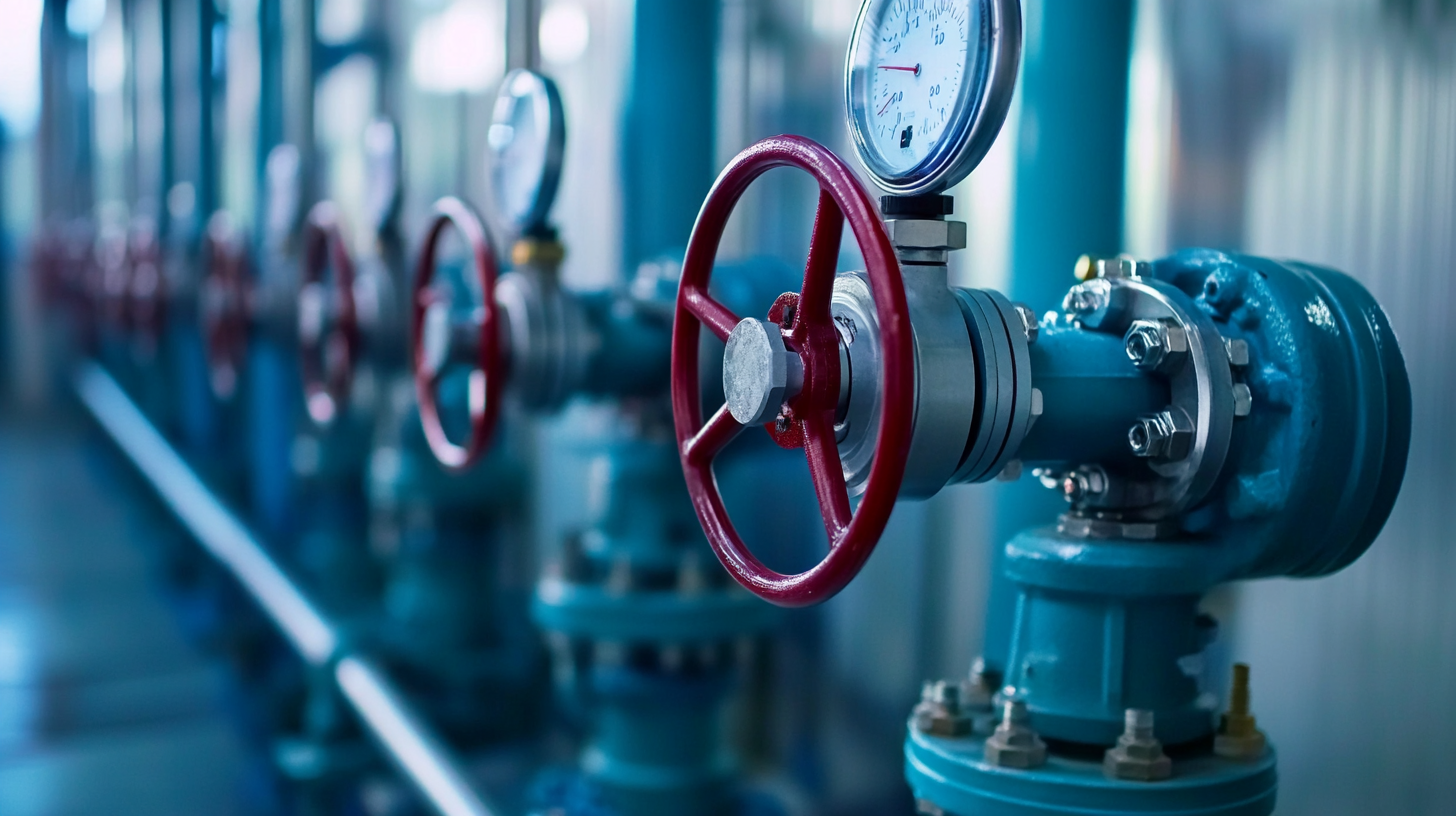Ultimate Guide to Comparing the Best Automatic Valves for Your Procurement Needs
 In today's industrial landscape, the need for efficiency and reliability in fluid control is paramount, making Automatic Valves a critical component in various applications. According to a recent market analysis report by Grand View Research, the global automatic valves market is projected to reach USD 15.5 billion by 2025, driven by their increasing adoption across sectors such as oil and gas, water management, and chemical processing. As industries strive for automation to enhance productivity and reduce operational costs, understanding the different types of automatic valves becomes essential for procurement professionals. This ultimate guide aims to provide a comprehensive comparison of the best automatic valves available, empowering stakeholders to make informed decisions that align with their specific operational requirements and strategic goals.
In today's industrial landscape, the need for efficiency and reliability in fluid control is paramount, making Automatic Valves a critical component in various applications. According to a recent market analysis report by Grand View Research, the global automatic valves market is projected to reach USD 15.5 billion by 2025, driven by their increasing adoption across sectors such as oil and gas, water management, and chemical processing. As industries strive for automation to enhance productivity and reduce operational costs, understanding the different types of automatic valves becomes essential for procurement professionals. This ultimate guide aims to provide a comprehensive comparison of the best automatic valves available, empowering stakeholders to make informed decisions that align with their specific operational requirements and strategic goals.
Understanding Automatic Valves: Types and Their Applications
Automatic valves are essential components in various industrial applications, providing precise control over fluid flow and contributing to system efficiency. Understanding the different types of automatic valves—such as globe valves, ball valves, and butterfly valves—helps stakeholders make informed purchasing decisions tailored to specific operational needs. According to a report by MarketsandMarkets, the global market for automatic valves is projected to reach $24.44 billion by 2027, growing at a CAGR of 6.2%. This growth indicates an increasing reliance on automated solutions for enhancing process control.
Each type of automatic valve serves unique functions in the system. For instance, globe valves are widely used for throttling and regulating flow, while ball valves offer minimal pressure drop and quick shut-off capabilities, making them ideal for on/off control applications. In contrast, butterfly valves are favored in large pipe installations due to their lightweight design and compact structure. Understanding these distinctions is crucial, as a study by Research and Markets noted that improper valve selection can lead to a 10-15% increase in energy consumption, thereby affecting overall operational costs. Thus, accurate knowledge of valve types and their applications is paramount for optimizing procurement strategies in any industrial setup.
Comparison of Different Types of Automatic Valves and Their Applications
Key Factors to Consider When Selecting Automatic Valves
When selecting automatic valves for your procurement needs, there are several key factors to consider to ensure optimal performance and reliability. One of the primary aspects is the valve's material compatibility with the fluid it will control. Different applications may require valves that withstand harsh chemicals, high pressures, or extreme temperatures. Therefore, assessing the environmental conditions and the nature of the fluids will help in choosing the right materials, such as stainless steel or plastic composites.
Another critical factor is the valve's actuation type. Automatic valves can be operated electrically, pneumatically, or hydraulically, each offering distinct advantages depending on the specific application. For instance, electric actuators may offer precise control and easy integration with automation systems, while pneumatic options can provide rapid response times in environments where speed is essential. Additionally, evaluating the valve's size and flow characteristics can prevent bottlenecks and ensure that the system operates efficiently. By carefully weighing these factors, procurement professionals can make informed decisions that enhance the functionality and longevity of their fluid control systems.

Quality Standards in Chinese Manufacturing of Automatic Valves
 In the realm of automatic valves, understanding quality standards in Chinese manufacturing is crucial for procurement decisions. Recent developments highlight that companies are increasingly focused on enhancing the quality and safety of their products, especially in vital sectors like water supply. For instance, initiatives to standardize the use of specific coatings for valves in drinking water systems signify a commitment to ensuring that these products are not just functional but also safe for public health.
In the realm of automatic valves, understanding quality standards in Chinese manufacturing is crucial for procurement decisions. Recent developments highlight that companies are increasingly focused on enhancing the quality and safety of their products, especially in vital sectors like water supply. For instance, initiatives to standardize the use of specific coatings for valves in drinking water systems signify a commitment to ensuring that these products are not just functional but also safe for public health.
Tip 1: When considering automatic valves, prioritize suppliers who conform to international quality standards. This often reflects a commitment to maintaining high manufacturing practices and ensuring reliability in their products.
Additionally, the ongoing collaboration between global manufacturers further emphasizes the need for quality assurance in valve production. These partnerships can lead to shared technologies and practices that enhance the overall quality of valves produced in China.
Tip 2: Evaluate the extent of a manufacturer’s quality control processes. Transparent practices and adherence to strict guidelines will often indicate a reliable supplier who values quality as much as you do.
Top Brands and Their Best-Selling Automatic Valves Worldwide
When it comes to choosing the best automatic valves for your procurement needs, several top brands stand out with their best-selling products worldwide. Brands like Siemens, Honeywell, and Parker have made significant strides in delivering innovative solutions tailored to various industries. Siemens, known for its reliability and advanced technology, offers automatic valves that provide excellent performance in energy management systems. Honeywell is another key player, offering a wide range of valves that cater to HVAC systems, ensuring efficient control and operation. Parker's automatic valves are celebrated for their durability and adaptability in challenging environments.
When selecting automatic valves, it’s essential to consider your specific application requirements. Tip 1: Assess the pressure and temperature ratings of the valves to ensure they meet your operational demands. This will prevent malfunctions and enhance system reliability. Tip 2: Investigate the ease of installation and maintenance of the valves, as this can significantly affect your overall operational efficiency. Streamlined maintenance can lead to less downtime and lower costs over time. With these considerations, you can make an informed decision that aligns with your procurement strategy and operational needs.
Future Trends in Automatic Valve Technology and Manufacturing
The automotive HVAC system market is experiencing a significant surge, projected to reach $34.81 billion by 2032. This growth is influenced by the increasing demand for energy-efficient and environmentally friendly vehicle solutions. As automotive manufacturers prioritize comfort and efficiency, innovations in automatic valve technology are becoming critical. These valves play a pivotal role in the HVAC systems, ensuring optimal airflow and temperature control, which directly impacts vehicle performance and user satisfaction.
Looking ahead, the future trends in automatic valve technology and manufacturing are closely tied to the broader advancements in fluid power systems. Experts in the field emphasize that automation is driving the need for smarter, more reliable components. The shift towards electrification and automation in vehicles necessitates valves that can seamlessly integrate with new digital control systems. As a result, the development of advanced materials and design innovations will define the upcoming landscape of automatic valves, catering to the evolving requirements of automotive HVAC systems and beyond.
Ultimate Guide to Comparing the Best Automatic Valves for Your Procurement Needs
| Valve Type | Material | Size Range (inches) | Pressure Rating (PSI) | Applications | Future Trends |
|---|---|---|---|---|---|
| Ball Valve | Stainless Steel | 0.5 - 12 | 1500 | Water, Gas, Oil | Smart Automation |
| Gate Valve | Cast Iron | 2 - 48 | 200 | Water Supply, Waste Water | Eco-Friendly Materials |
| Globe Valve | Brass | 0.25 - 8 | 600 | Fuel, Steam | AI Monitoring |
| Check Valve | PVC | 1 - 10 | 150 | Drainage, Sewage | Remote Sensing |
| Butterfly Valve | Aluminum | 1 - 16 | 300 | HVAC, Chemical | Automation Integration |
